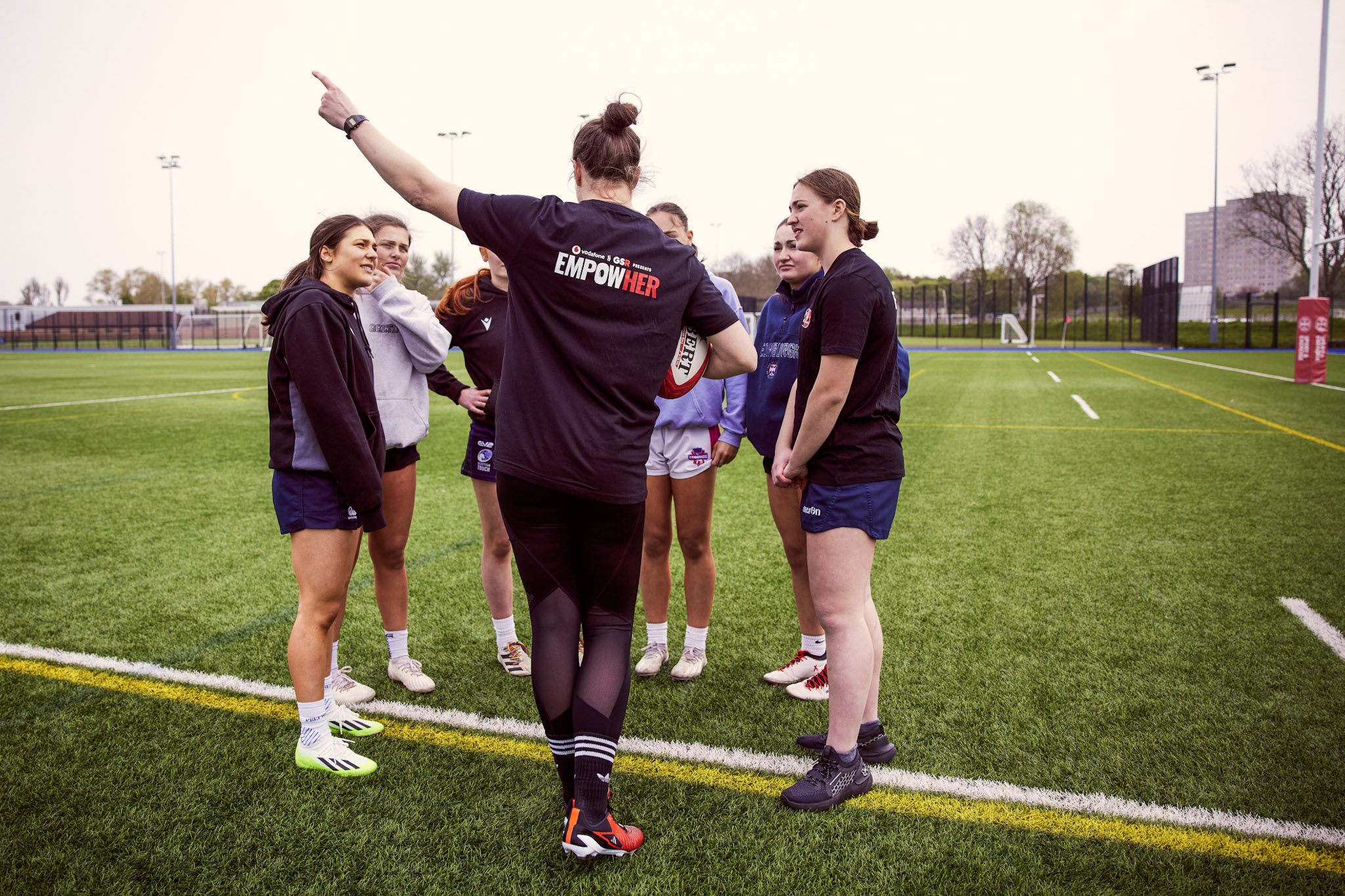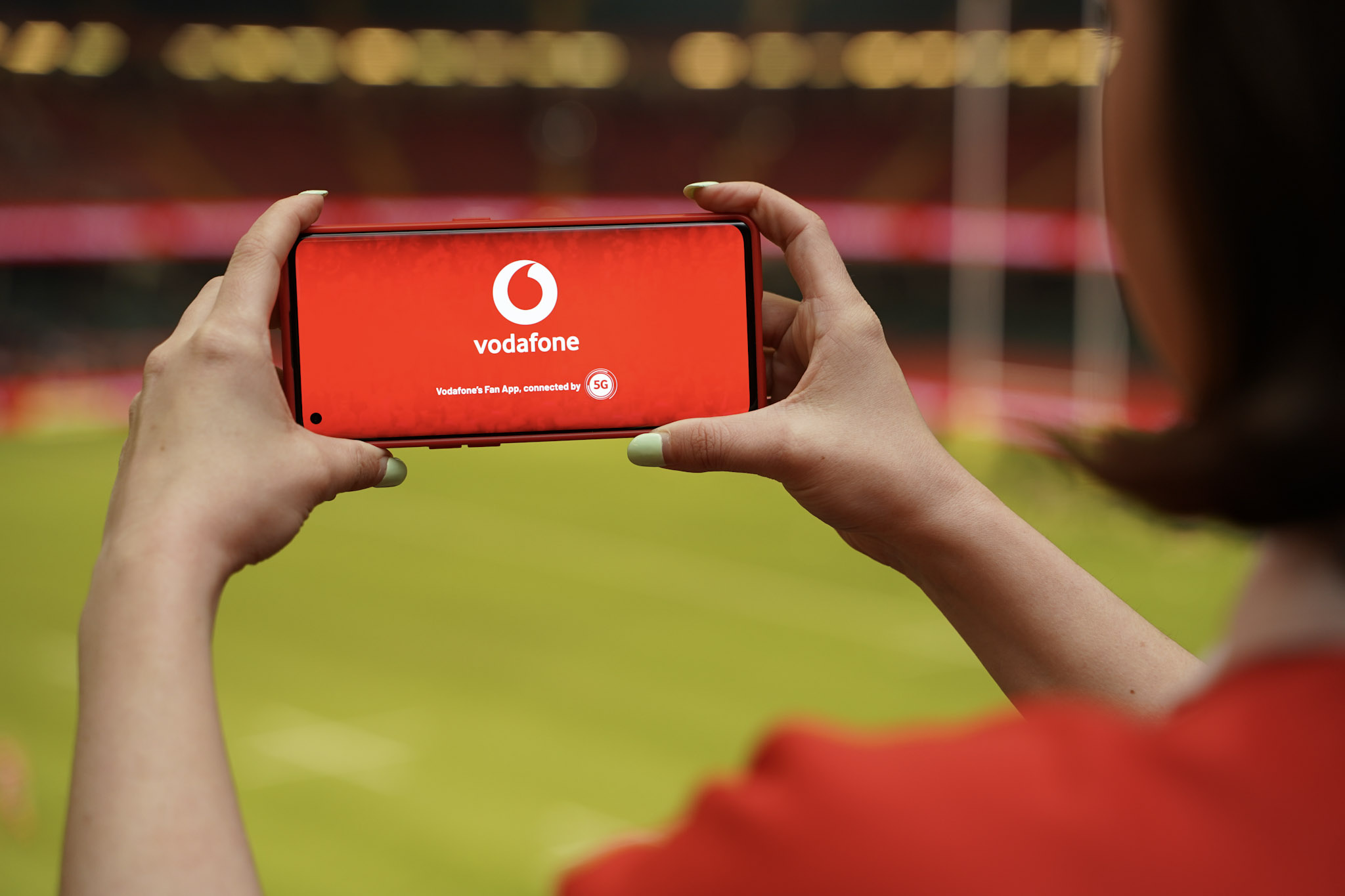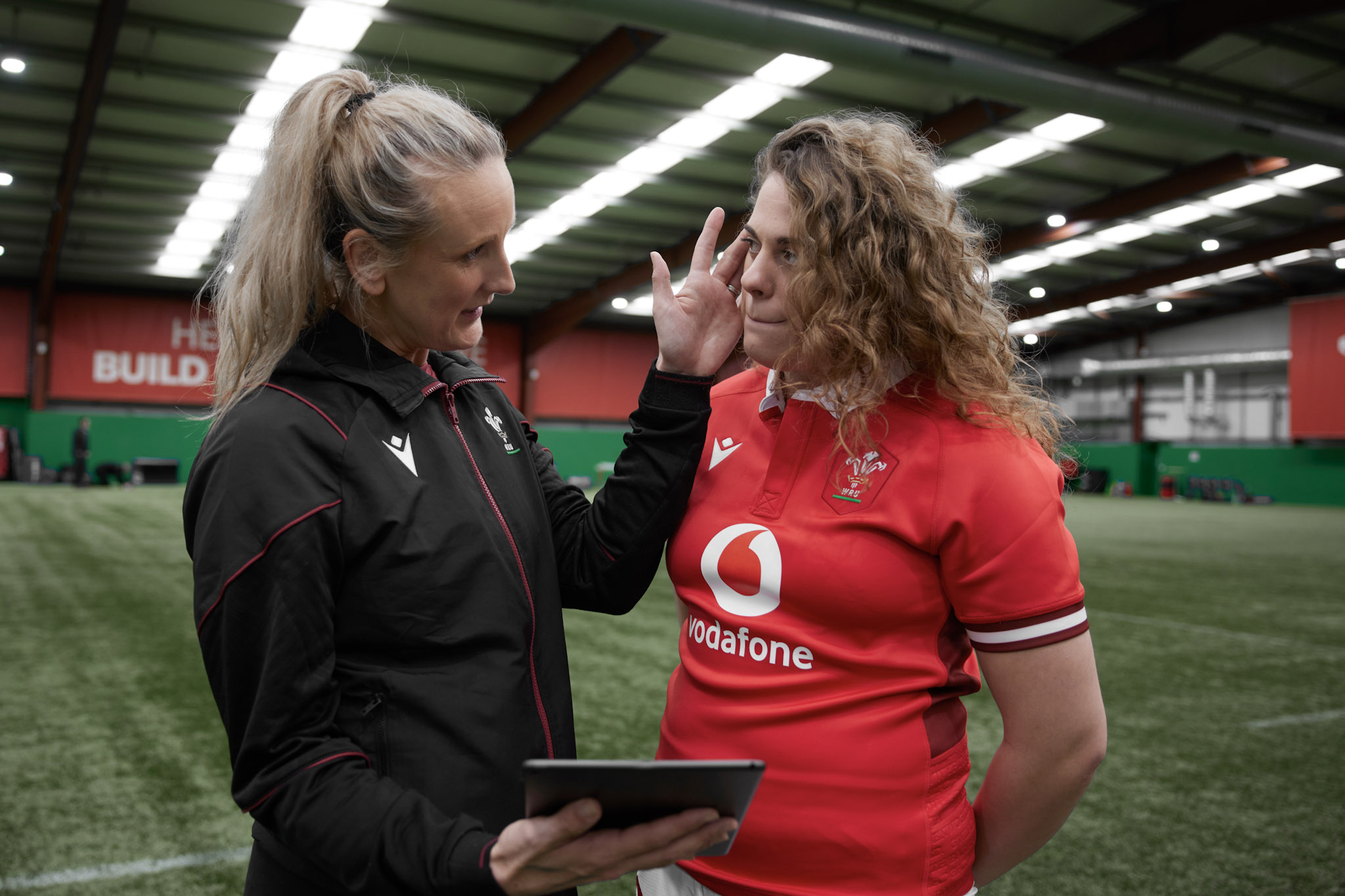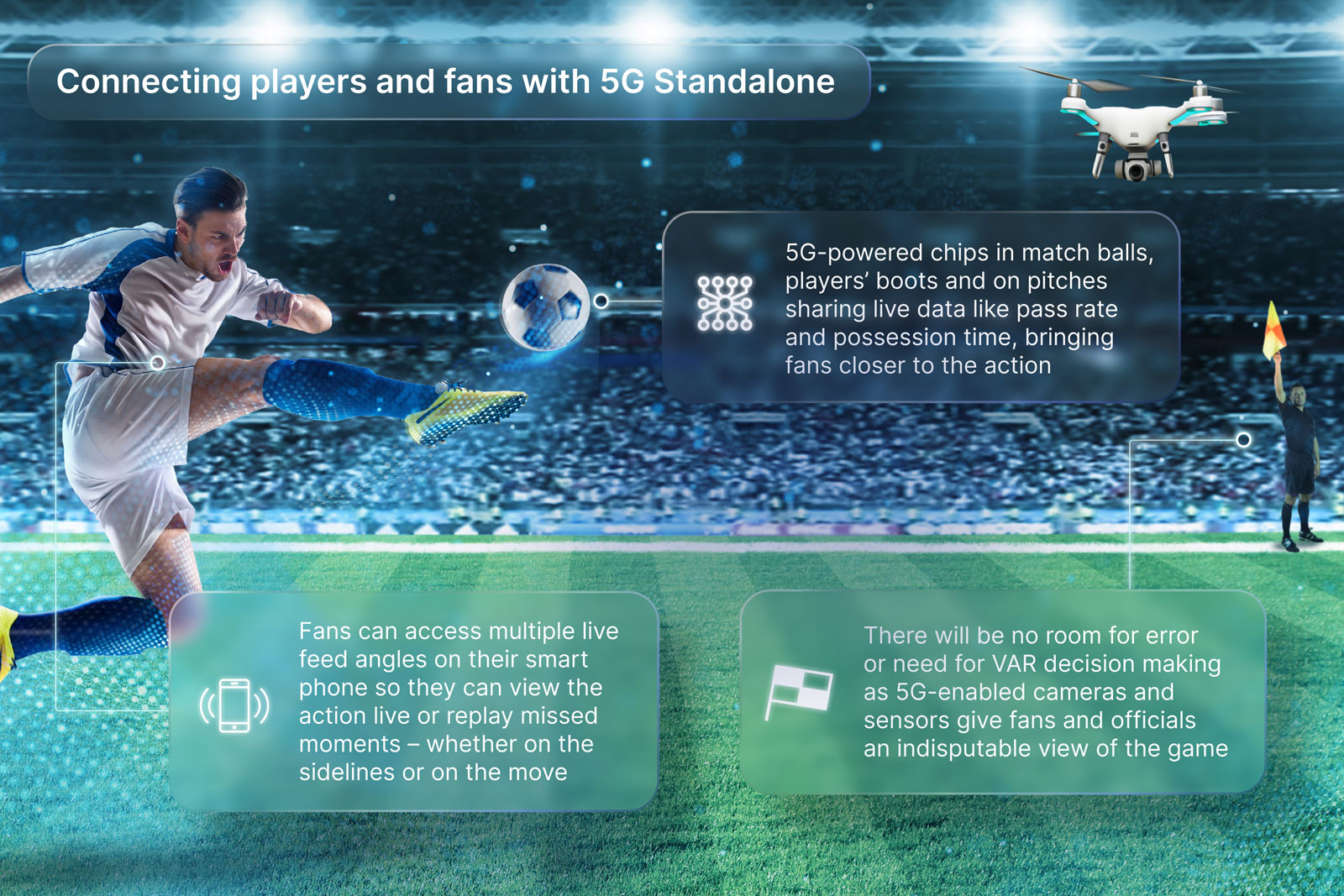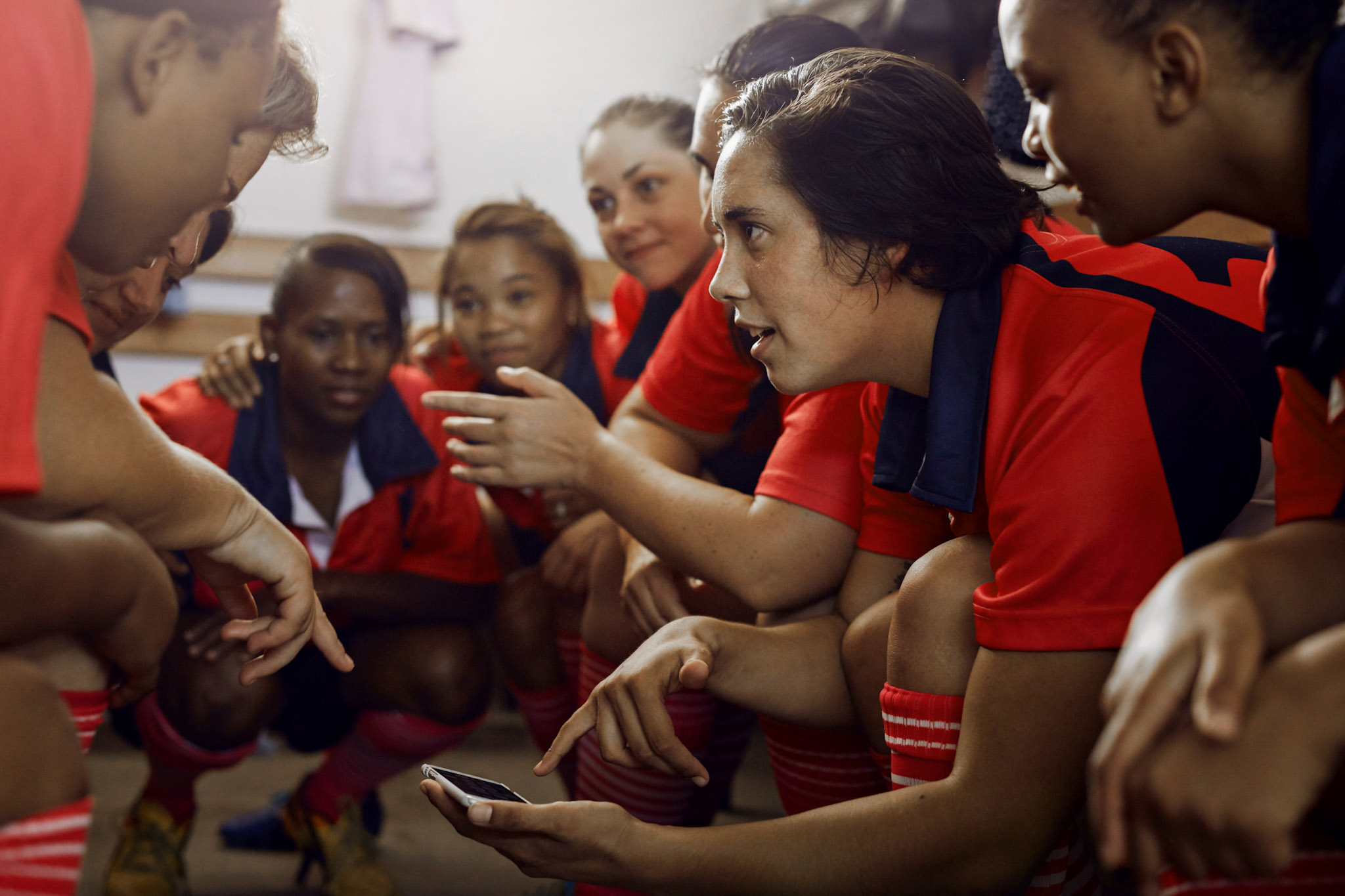5G has the potential to quietly improve almost every aspect of match day. Here’s a sneak peek of the future fan experience.
New research* has revealed that 5G-powered technology could add £139 million to the UK rugby economy each season by 2029. This is timely news for Premiership Rugby in England, with clubs having posted losses of almost £25 million for the 2022-2023 season.
Better yet, building 5G into the matchday ecosystem could vastly improve the fan experience – from playing or coaching at grassroots level right through to professional in-stadium events. Here’s a glimpse of the future.
10:00 am – Upgrading the grassroots game
Your day starts like most weekends do – carting the eldest to their weekly rugby game, a little earlier than you’d probably prefer. However, today’s opposition are also in for a rude awakening.
That’s because your team has spent the week training with a haptic suit, which uses electro-stimulation to create the feeling of being tackled, without the need for physical contact.
Demonstrated by Juan De Jongh in 2019 for the launch of Vodafone’s 5G network, the suit can help players train with each other no matter where they are in the world, by using real-time, low-latency 5G connections.
To top it off, 5G-enabled hologram technology – as first debuted by footballer Steph Houghton in 2018 and then tennis star Emma Raducanu in 2023 – meant the team were provided with world-class mentoring from their favourite overseas stars.
The result is supercharged skills development. And 29-3 in your team’s favour.
"Building 5G into the matchday ecosystem could vastly improve the fan experience – from playing or coaching at grassroots level right through to professional in-stadium events."
2:30 pm – A journey that’s as good as the destination
The afternoon sees focus turn to the professional game, as you and the family board a train towards your local stadium for the evening kick off.
And you’re not alone, with a third of British sports fans travelling to home matches by train. This figure rises to 57% for the visiting crowd too – but the less said about them the better.
For now though, every passenger is a winner, since 5G-enabled sensors have made this train – and the tracks it runs on – smoother, safer and swifter.
In fact, the resulting real-time monitoring they enable could save rugby fans a total of 170,000 hours of rail travel time each season. Time that could be spent much more productively elsewhere, like in your favourite pre-match burger joint.
How tech is transforming the way we play and enjoy sport
From 5G tennis lessons to training tailored around menstrual cycles, technology is elevating sport to new heights.
4:30 pm – Virtual experiences for real fans
Since the train companies were able to identify potential infrastructure issues before they could cause any delays, you’re actually at the ground an hour ahead of kick off.
With time to kill, you decide to check out the new fan zone, as you’d heard rumours of a virtual reality (VR) headset experience and wanted to see what all the fuss was about.
You weren’t the only one with that idea though, so you decide to skip the queue and head into the stadium early. Your friend, however – who wasn’t lucky enough to grab a ticket for the match – makes it into the fan zone to watch the action in real time thanks to VR technology.
With multiple live camera feeds on a dedicated slice of 5G, the uninterrupted experience is delivered directly to the VR headset. Meanwhile, match data is transmitted from players’ wearable sensors to the virtual field of vision, so that it’s almost like being in the stadium itself – almost…
5:30 pm – A new way to see the game
For you, however, nothing could compare with the traditional in-stadium experience. And now that the game is in full flow, you can’t keep your eyes off it.
Your youngest isn’t quite as enthralled though, so you pull out your mobile phone for some entertainment support. Fortunately for them, you downloaded the latest Vodafone 5G fan app before leaving the house.
Using Vodafone’s superfast, reliable and award-winning 5G network, the app lets fans explore live elements of the match in front of them. Augmented reality (AR) then projects these match and player statistics onto your phone’s view of the pitch itself.
It’s safe to say that your youngest is now fully invested in today’s game. Thank you, technology.
6:10 pm – An industry with an appetite for more
Before you know it, half-time arrives, which means only one thing: it’s time for a snack…
A stadium’s food and drink sales account for a huge part of the match day economy but, with thousands of empty stomachs all queuing at once, not everyone is always satisfied with the experience. That includes the vendors themselves, who risk losing out on sales during what should be their most profitable period.
Luckily, with 5G sensors in place, food and drink vendors are able to collect and analyse real-time data. In turn, they can re-stock items based on people’s preferences, open up additional kiosks when needed or even allow customers to order and pre-order from their mobile phones to avoid the half-time rush.
All of which could result in a 42% uplift in revenue per fixture. For professional rugby alone, this could equate to £24 million being added to the match day economy over the next five years. Now that’s a meal deal worth investing in.
Smart sports and 'talking’ trainers: Futurist Andrew Grill predicts five ways 5G will supercharge the things the UK loves most in five years
Leading futurist Andrew Grill predicts how 5G SA could transform the things the UK loves most in the next five-to-seven years – from retail and sports to gaming and entertainment.
7:30 pm – Making matchday traffic a thing of the past
As the game comes to an end, things continue to run smoothly as you leave the ground, thanks in part to a comprehensive 5G Standalone network. The most technologically advanced UK network makes checking your train time – and the other scores up and down the league – a breeze.
Meanwhile, the network slicing allows other groups, such as emergency service workers, to simultaneously have their own internet and call traffic managed on a completely different strand. This means everyone can access the network without delay or interruption, no matter how busy the crowd.
And speaking of trains, 5G technology hasn’t only made them more reliable but greener too, with 5G sensors holding the potential to reduce carbon emissions by 5,400 tonnes of carbon dioxide equivalent (CO2e) per season. That’s comparable to removing 3,200 cars from UK roads for an entire year.
Which tops off a successful day at the rugby for you and thousands of others.
Stay up to date with the latest news from Vodafone by following us on Twitter and signing up for News Centre website notifications.
* Source: Development Economics, commissioned by Vodafone, March 2024.
![2-Young man enjoying a rugby match at the stadium[Adobe Stock] stock image of a happy bearded man in the stands at a stadium enjoying a rugby match](https://www.vodafone.co.uk/newscentre/app/uploads/2024/04/2-Young-man-enjoying-a-rugby-match-at-the-stadiumAdobe-Stock.jpg)

